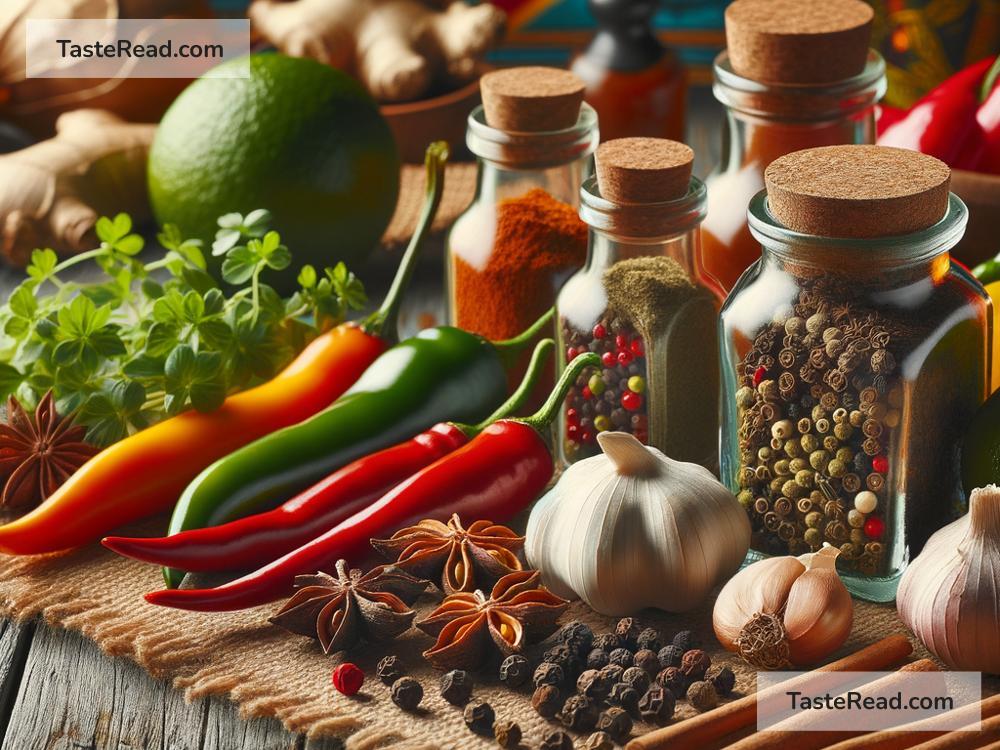Caribbean Jerk Seasoning: A Flavor with Deep Historical Roots
If you’re a fan of bold and tasty food, you’ve probably heard of Caribbean jerk seasoning. Famous for its mix of heat, sweetness, and smoky flavor, this spice blend is a key part of Caribbean cooking. But jerk seasoning is more than just a tasty way to spice up chicken, pork, or vegetables—it’s an important part of the Caribbean’s history and culture. Let’s take a journey to learn more about where this iconic seasoning comes from and why it means so much to the people of the Caribbean.
What Is Jerk Seasoning?
Jerk seasoning is a blend of spices and herbs that gives food a delicious kick. While recipes can differ, they usually include ingredients like:
- Allspice: A warm spice that tastes a little like clove, cinnamon, and nutmeg all mixed together.
- Scotch bonnet peppers: Tiny peppers that are very hot but also slightly fruity in flavor.
- Thyme: A fragrant herb that gives the seasoning a fresh and earthy taste.
- Garlic, onion, and ginger: These three ingredients are often added for extra warmth and depth.
- Brown sugar: Often used to balance out the heat of the peppers.
- Cloves, cinnamon, and nutmeg: Additional spices that add richness and complexity.
When combined, these ingredients create a powerful mix that is used to marinate or rub onto meat before cooking. The flavor is smoky, spicy, and aromatic—perfect for grilling or slow-roasting over an open flame.
Where Does Jerk Seasoning Come From?
Jerk seasoning comes from Jamaica, one of the countries in the Caribbean. Its history goes back hundreds of years and is connected to the story of the island’s people. To truly understand jerk seasoning, we need to look at Jamaica’s history, starting with the Indigenous people of the island.
The Taino People: Early Influences
Long before Europeans arrived in the Caribbean, the region was home to the Taino people. They were skilled farmers and cooks who lived off the land, growing crops like sweet potatoes, corn, and peppers. The Taino cooked their food using a unique method called “barbacoa” (which is where the word “barbecue” comes from). They would smoke meat over a wood fire, often with spices and herbs to add flavor. This cooking style became one of the early influences on jerk seasoning.
The Taino also used pimento (also known as allspice), a native Jamaican spice, to flavor their food. Pimento would later become one of the key ingredients in jerk seasoning.
The Arrival of African Slaves and Maroon Communities
In the 16th century, European colonizers arrived in Jamaica and enslaved Africans to work on plantations growing sugar, coffee, and other crops. These enslaved Africans brought their own culinary traditions with them, including the use of peppers and spices to season food. When some enslaved Africans escaped, they formed communities in the remote mountains and forests of Jamaica called Maroon communities. These Maroons played a huge role in the development of jerk seasoning.
The Maroons often lived outside of the reach of colonial powers and needed creative ways to survive. To avoid being caught, they cooked their meat slowly over pits in the ground, using the smoke to carry the flavor while hiding the scent of food from their enemies. They combined African cooking techniques with the Taino smoking methods and began to flavor their meat with local spices like allspice, Scotch bonnet peppers, and thyme. This unique combination became what we now know as “jerking”—the technique of seasoning and smoking food—and laid the foundation for jerk seasoning as we know it.
Blend of Cultures
Over time, Jamaican cuisine absorbed influences from many different cultures. The arrival of people from India, China, and Europe introduced new spices and techniques, which helped evolve the flavor of jerk seasoning. But even as the recipe changed, the heart of jerk seasoning stayed true to its African and Indigenous Caribbean roots.
Why Is Jerk Seasoning Important Today?
Jerk seasoning isn’t just about good food—it’s a symbol of Jamaican identity and heritage. Each ingredient tells a story of the island’s history, from the Taino people’s use of pimento to the resilience of African Maroons who created a unique cooking style in the face of hardship.
Today, jerk seasoning is loved all around the world. Restaurants everywhere serve dishes like jerk chicken or jerk pork, giving people a taste of Caribbean flavor. In Jamaica, however, jerk is more than just food—it brings people together. Jerk festivals and roadside jerk stands are popular across the island and are a way for families and communities to bond over great tasting meals.
How Can You Enjoy Jerk Seasoning?
If you’ve never tried jerk seasoning, it’s easy to find at grocery stores or even make your own at home. You can use it as a marinade, a dry rub, or even sprinkle it on your vegetables before grilling. While jerk chicken is the most famous dish, you can also use jerk seasoning on pork, fish, tofu, or anything else you like.
Whether you’re enjoying it at a Jamaican jerk pit or cooking with it in your own kitchen, jerk seasoning offers more than just hot and smoky flavors—it’s a taste of history, resilience, and Caribbean pride.
Final Thoughts
Caribbean jerk seasoning is more than just a blend of spices; it’s a story of survival, creativity, and culture. From the smoky cooking techniques of the Taino to the spicy traditions of African ex-slaves, jerk seasoning reflects the diverse history of Jamaica. So the next time you enjoy a juicy piece of jerk chicken, take a moment to appreciate the deep roots behind this flavorful dish. It’s truly a piece of Caribbean history that you can savor with every bite.


